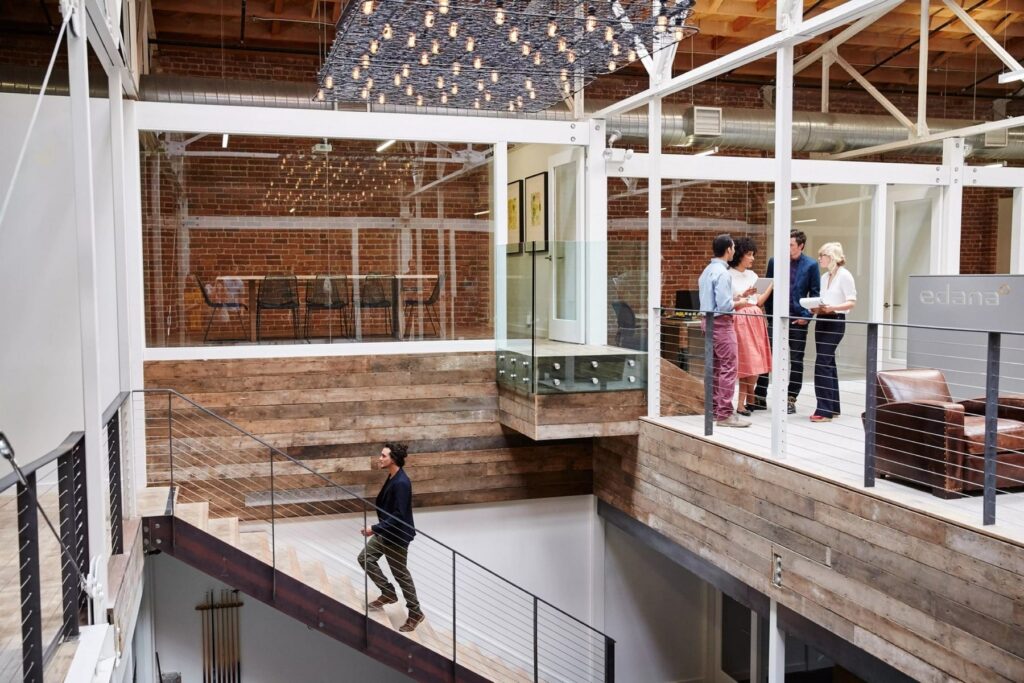Importance of User-Centered Design
The strength of user-centered design lies in its ability to prioritize the needs, desires, and capabilities of users in the application development process. This fundamental approach recognizes that the success of an application depends on its optimal ability to meet the expectations and requirements of those who will use it.
By adopting a user-centered perspective in the early stages of application development, designers and developers can better understand the target users. This allows them to anticipate users’ needs, behaviors, and preferences, leading to the creation of more intuitive, user-friendly applications tailored to specific needs.
This proactive approach reduces the risk of designing applications that are disconnected from users’ actual expectations. By deeply understanding end-users, development teams can create simpler and more effective interfaces, providing an enhanced user experience and reinforcing long-term adoption and loyalty to the application. From a business perspective, this is crucial, as the success of a digitalization program or a market-released solution directly depends on its alignment with user needs.
User-centered design also contributes to minimizing costs related to post-launch modifications and adjustments. By integrating user feedback throughout the development process, teams can iterate and refine the application continuously to meet changing needs and market trends. This is also a central point for a company’s profitability.
At Edana, aware of its importance in creating meaningful and high-performance user experiences, we actively integrate user-centered design into our application development process for Swiss and international businesses. Whether it’s providing support in digital strategy, software engineering, mobile application development, or comprehensive guidance, we prioritize user needs.
Key Principles of User-Centered Design
The key principles of user-centered design represent essential foundations that guide the development process by placing the user at the forefront of thinking. These principles are crucial for creating applications that truly add value, whether it’s a business application to digitize company processes or a consumer-focused application like a mobile app or web platform. Here are some of these principles:
Empathy and Understanding Users:
The first step is to develop deep empathy for users by understanding their needs, motivations, and challenges. This profound understanding guides all design decisions to ensure the application meets users’ actual expectations. This is what a user experience (UX) specialist, a product owner, or to some extent, a marketing strategist does. However, every stakeholder must show the utmost empathy during their participation in the application design stages. This requires varying levels of effort and specific guidance. Workshops are sometimes good opportunities to facilitate this co-creative process in which empathy towards the end user takes a central and crucial role.
Active User Involvement
Actively involving users throughout the development cycle is crucial. Continuous user feedback allows for adjustments and improvements, ensuring better alignment with their needs. This can start with tests and questionnaires targeting an audience close to the end users during the project’s design phase. Once the product is in production, feedback obtained from direct users of the product is valuable to evolve it in the right direction and ensure it better aligns with the expectations of its actual users.
Continuous Iterations and Testing
User-centered design involves iterative cycles of design, testing, and feedback. This iterative approach quickly identifies and resolves potential issues, constantly improving the user experience.
User Experience (UX) Design
Placing user experience at the heart of the design process ensures the application is easy to use, intuitive, and enjoyable for users. Well-thought-out user interfaces and smooth navigation are key elements for a positive user experience.
Adaptability and Scalability
Applications designed based on these principles must be flexible to adapt to changing user needs and technological advancements. They should be scalable to integrate new features while maintaining a consistent user experience.
By combining these principles, development teams can create applications that not only meet user needs but also delight users with their user-friendliness and relevance, providing exceptional experiences that stand out in the competitive application market, for example.
Edana: strategic digital partner in Switzerland
We support companies and organizations in their digital transformation
Common User-Centered Design Methodologies
Common user-centered design methodologies encompass various methodological frameworks and specific approaches aimed at integrating user needs throughout the development process. Here are some of these methodologies:
Design Thinking
Design Thinking is an iterative process focused on deep understanding of users, creative idea generation, and solving complex problems. It encourages an empathetic approach to define, conceptualize, and implement innovative solutions.
UX/UI Design
User Experience (UX) and User Interface (UI) Design are key disciplines in user-centered design. UX Design focuses on creating positive user experiences by analyzing user behavior and optimizing accessibility and ease of use. UI Design focuses on the visual design of the user interface to ensure an aesthetic and intuitive experience.
In-Depth User Research
This methodology involves techniques such as interviews, observations, surveys, and user testing to gather valuable information about user needs, desires, and preferences. This data guides the design process.
Rapid Prototyping
Rapid prototyping involves creating iterative and simplified versions of the application to gather user feedback as early as possible. These prototypes validate concepts, identify potential issues, and allow for rapid iteration of solutions.
User Testing and Continuous Evaluation
User testing involves having real users test the application to assess its functionality and user experience. These tests help identify issues and make continuous improvements throughout the development process.
Illustrative Case Studies
Illustrative case studies highlight successful examples where user-centered design has been applied effectively. Here are some representative case studies:
Improving User Experience at Airbnb
Airbnb redesigned its interface based on a user-centered approach, collecting user data through surveys, behavioral studies, and platform usage analysis. Using user testing and prototypes, Airbnb identified pain points and revamped the interface to make searching and booking accommodations more user-friendly.
UI Redefinition at Slack
Slack redesigned its interface based on in-depth research into user behaviors and needs. Usability studies, interviews, and careful listening to user feedback informed changes such as menu simplification, improved visibility of notifications, and organization of communication channels. These adjustments were made to streamline interaction and navigation, enhancing platform efficiency and user-friendliness.
Mobile Experience Overhaul at Google Maps
Google Maps revamped its mobile application by focusing on specific elements to enhance the user experience. They simplified the user interface by restructuring menus and navigation options for smoother use. Additionally, Google Maps integrated customization features such as route suggestions based on user travel habits and real-time traffic information, providing a more personalized and convenient experience. This redesign resulted in more intuitive navigation, better adaptability to user needs, and increased overall user engagement with the application.
Projects by Our Engineering Teams
Our experts in UX design, software architecture, full-stack development, DevOps, and security design user-centered applications that are robust and business-oriented. Here are some concrete case studies of projects we have undertaken for Swiss clients:
These case studies highlight how applying user-centered methodologies has enabled these companies to develop remarkable products and user experiences, demonstrating the tangible benefits of a needs-focused approach in application development.
Let’s talk about your application/software project now
Challenges and Future Perspectives
Les défis et les perspectives futures dans le domaine de la conception The challenges and future perspectives in the field of user-centered design provide insight into current obstacles and upcoming trends for application development professionals. Here are some of these challenges and perspectives:
Current Challenges
In application development, a major challenge lies in the increasing diversity of users, characterized by a variety of needs, habits, and skills. Adapting applications to meet this diversity represents a constant challenge, requiring a flexible and inclusive approach.
Collecting data to understand users is crucial, but it also raises questions about privacy and ethical management of personal data. Responsible approaches are necessary to ensure the security and confidentiality of collected information while using data ethically to improve user experiences.
Another major challenge is maintaining the long-term relevance of applications. User needs evolve rapidly in a constantly changing technological landscape. Keeping an application relevant and useful requires continuous adaptation and regular updates to meet changing user needs while aligning with technological advancements.
Managing user diversity, ethical data collection, and the need to maintain long-term relevance are key challenges in application development, requiring an agile and constantly adaptive approach to meet changing user expectations in a dynamic technological environment.
Future Perspectives
The increasing integration of artificial intelligence (AI) to personalize the user experience is an emerging trend. This evolution aims to offer more tailored and relevant interactions for each user, using AI algorithms to customize application features and content based on individual preferences.
Immersive technologies such as augmented reality (AR) and virtual reality (VR) open new horizons for creating innovative and captivating user experiences. These technological advances offer opportunities to design applications with more immersive and engaging interactions for users.
In the context of user-centered design, ethical-based approaches are gaining importance. It becomes crucial to ensure transparency, security, and accountability in the collection and use of user data. This ethical approach aims to preserve user confidentiality and rights while responsibly using data to improve user experiences.
Closer interdisciplinary collaboration between different fields such as design, technology, psychology, and ethics becomes essential to create more holistic applications. This collaboration considers various aspects of the user experience, ensuring a comprehensive and balanced approach in developing user-centered applications.
By addressing these challenges and anticipating these trends, user-centered design professionals can develop more adaptive, innovative, and ethical applications that meet changing user needs while providing exceptional and relevant user experiences.
Conclusion on User-Centered Design
In conclusion, user-centered design goes beyond a simple development process. It is a crucial strategic investment, not only to meet user needs but also to strengthen the competitiveness of the company, ensure compliance with market requirements, and ensure operational resilience.
By integrating this approach into your technological strategy, you consolidate your company’s competitive position in Switzerland and/or internationally, foster customer loyalty, and open up new growth opportunities. Edana remains at your disposal to assist you in the successful implementation of these strategies, essential to ensuring your competitive advantage in the market.







 Views: 13878
Views: 13878

